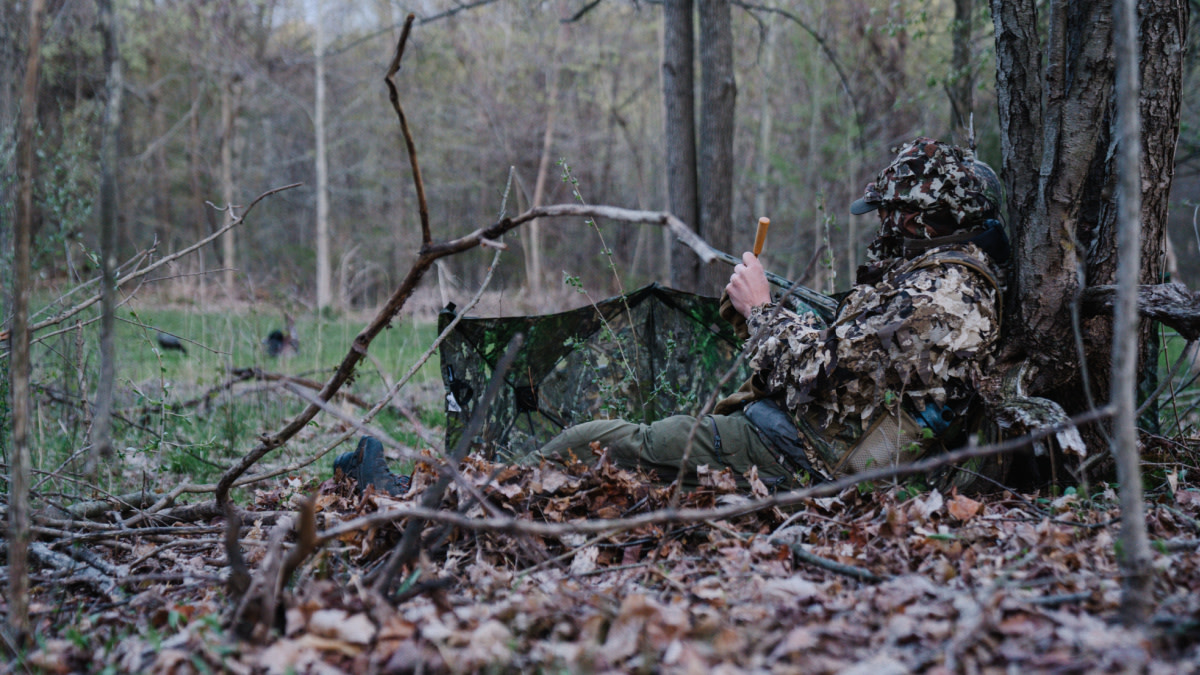
Back in the early '90s when I drew my first Minnesota gobbler tag, turkey hunting advice was all the same: Yelp three times and shut up. Give the toms time to commit and, whatever you do, don’t over-call.
This advice was mostly bullshit. You can call in toms by yelping three times every hour, but you can also just wait for them to see the decoys and commit. You can call in a tom by scratching in the leaves once in a while too, but where’s the fun in that?
A lot of hunters started out with the belief that there was no sin greater than turkey talking too much. If you pay attention to live hens (which you should) you might realize that the actual birds you’re trying to mimic and engage in conversation don’t follow this advice either.
Now, you shouldn’t call just for calling’s sake. This is particularly true if you’re not confident with your ability to ramp things up and still sound like a real bird. Understand that there are times when less is more, especially when you’re dealing with pressured birds or nasty weather or both. There are other times, however, where getting after it is the best bet for eliciting a positive response.
Spooked Turks When you hear the dreaded putt, you know the whole thing is going to blow up, right? Wrong. Earlier this spring, I got picked off switching on my camera when a hen came in silently. She putted and started walking away, so I picked up my slate and started cutting. At first, she putted louder and faster, but with my nonstop, aggressive cutting, she switched gears and started yapping right back.
Within five minutes she was in our spread, purring quietly and we had a monster of a tom strutting in at 75 yards. An unseen hen took him away, but it was an awesome encounter that wouldn’t have happened without aggressive talk.
A lightly spooked bird, even on public land, can be persuaded to stick around if you call hard at them. You also have nothing to lose after you hear the first putt. I prefer a sharp cut from a slate call for this job. While it doesn’t work every time, if the bird didn’t bust you too hard, this can be a great way to salvage an encounter.
Midday Lull In high school, a buddy and I drove down to northern Missouri to hunt public land longbeards. While the roost gobbling was hot, the lunch shift was dead. With a 1 p.m. closure, we had a strategy session at noon and decided to set up 50 yards apart and call to one another like it was an absolute turkey party.
After our first back and forth, two birds sounded off. The first gobbled closer on our ridge before a shotgun blast caused both of us to jump. Someone had gotten between us and the bird and made good on the opportunity.
Despite the outcome, that lesson stuck. When nothing is happening, you might be tempted to believe staying tight-lipped is the way to go. Oftentimes it’s not. If you have a partner who can call, you can really create some good action by getting aggressive. If you’re solo, learn to run a mouth call and a slate or box call at the same time. This way you can cut yourself off with aggressive yelping and cutting and make it sound like dominant hens are not willing to tolerate one another. This goes against conventional wisdom, which holds that you’re supposed to take the turkey’s temperature and call at a similar cadence and frequency.
I don’t know how many midday, pressured birds I’ve killed doing this, but it’s enough to where I try it every single day I hunt unless I’m dealing with absolutely brutal weather conditions.
The Noncommittal Bird We often look at turkey hunting like we need to run into a hot bird and all of our problems will be solved. Certainly a 2-year-old that gobbles at every passing crow or honking goose is a gift and should be treated as such, but what about the birds you can see that just don’t seem that interested?
These distant strutters are usually with hens, whether you can see them or not. They don’t have much of a reason to leave the ladies, so they don’t. This is especially true if you’re trying to tempt them with meager, sparse calling. When a tom just doesn’t seem like he’s willing to cover the distance, give him something to consider.
With these birds, I love aggressive clucking, cutting, and purring. The latter oftentimes seals the deal and seems to say something to the hens too. I’ve had a lot of hens come in to display on my lead hen decoy and, during their dominance posturing, will purr aggressively. The same goes for toms that are sorting out dominance in flocks.
It doesn’t matter why they do it, as long as you know when you should do it as well. If a bird just doesn’t look like he’s going to come, call hard and give him something to consider. Oftentimes they ignore it but sometimes they break off and commit. Occassionally, the hens get ticked and lead toms over.
Before getting aggressive on calls, get good with good calls. Confidence in yourself and your calls matters. After that, pay attention to the times when you’ve got nothing to lose or it just feels ripe to turn the volume up to 11. It works often enough to keep in your quiver, even if conventional turkey advice says otherwise.




